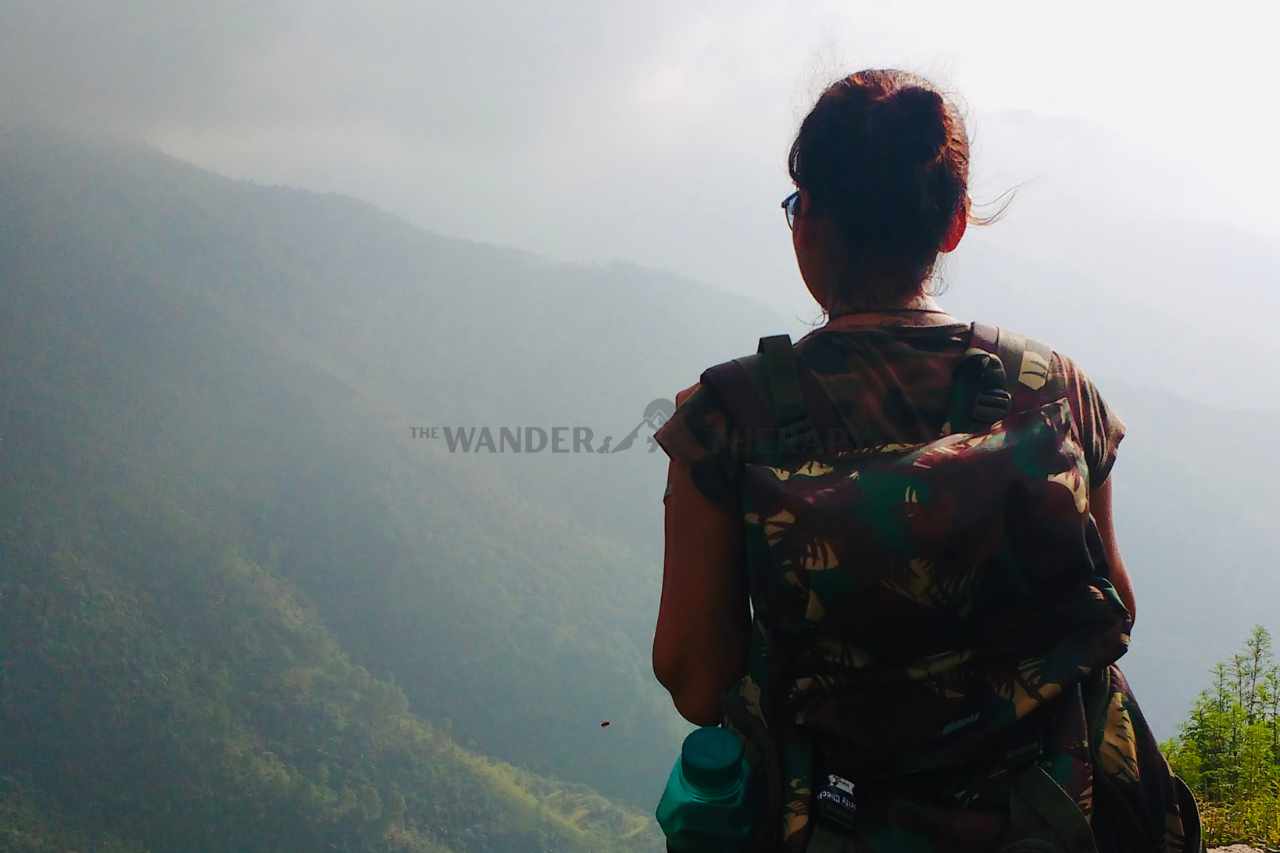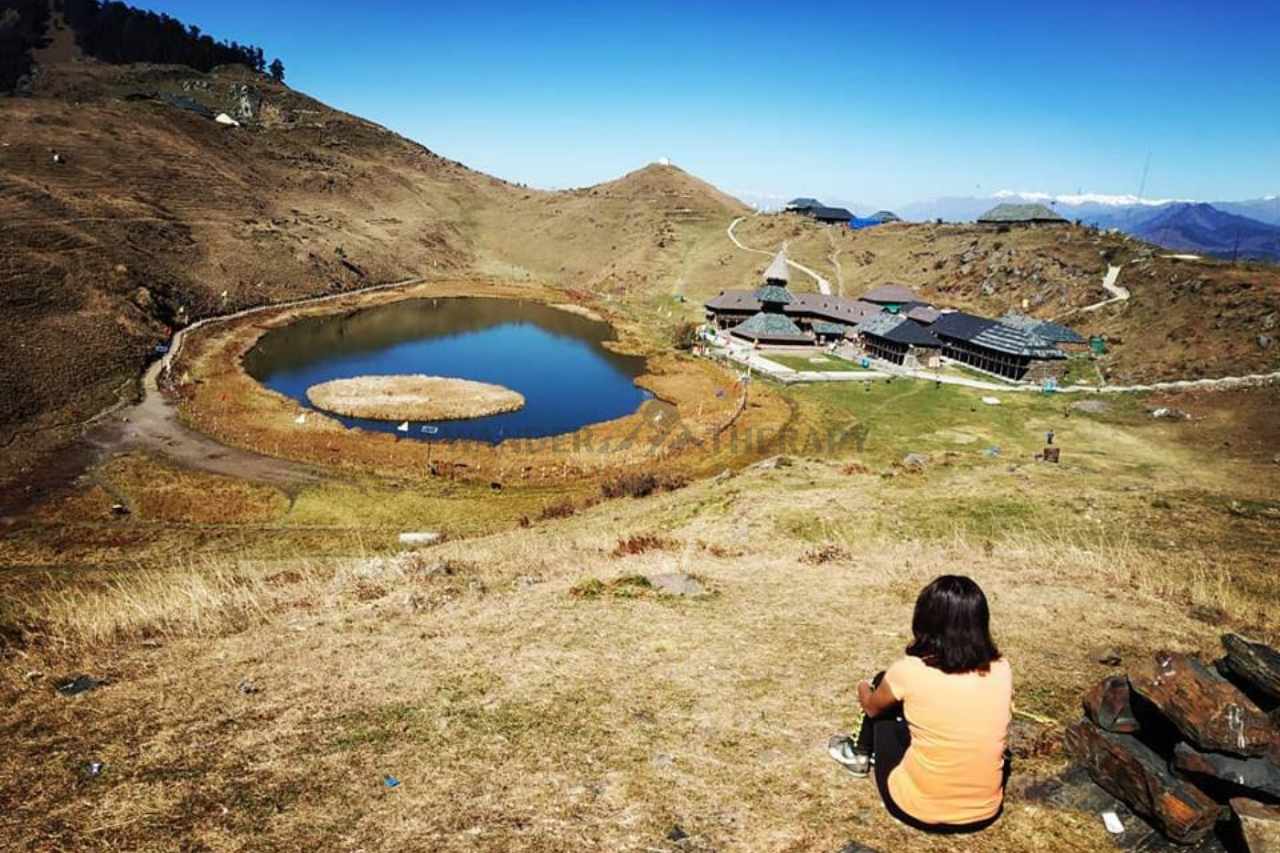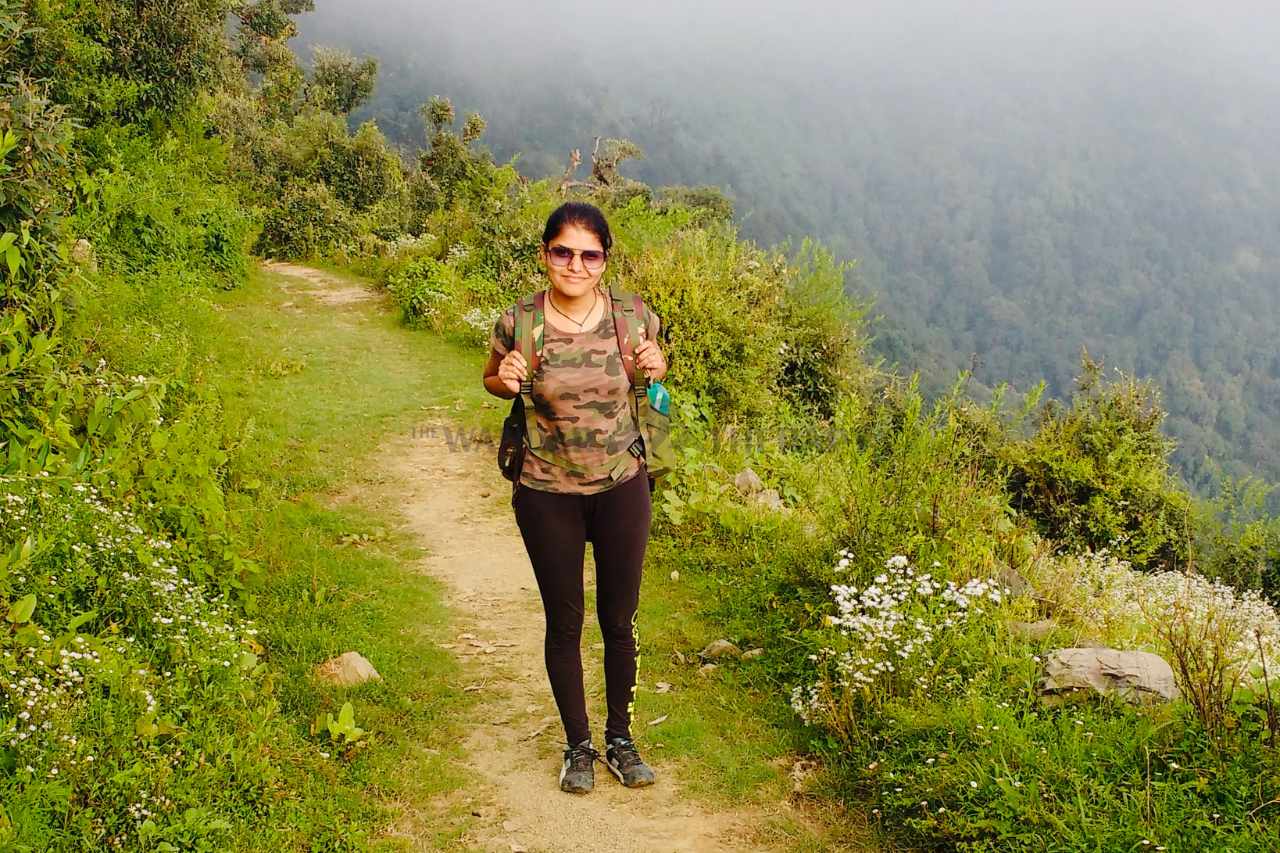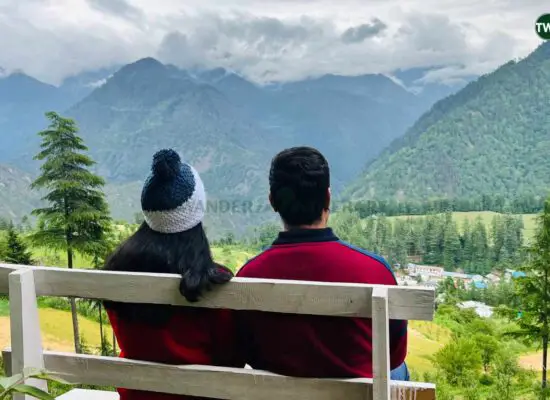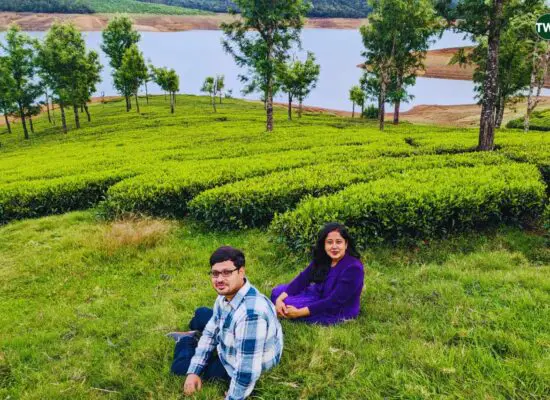Disclaimer: We are serious about content integrity and staying true to our readers. Thus, you can be assured that any article you read across our website is free of bias and is not produced by AI-platforms. Read about our editorial policies.
If you are an orophile (mountain lover), you must be using these two terms quite frequently – Hiking and Trekking. Having been traveling to the mountains for several years now, I have fond memories from both activities.
My favorite treks include the Tosh Valley and Prashar Lake treks in Himachal Pradesh, along with the Nag Tibba trek in Uttarakhand. On the other hand, my most memorable hike was to the Dainkund Peak in Himachal Pradesh.
But, you’re not very sure about the difference between the two? Though similar, hiking and trekking are technically quite different from each other. Come, let me take you through the major differences between trekking and hiking in this article.
Contents
Hiking Vs Trekking: A Beginner’s Guide

In simple words, hiking means going for nature walks for pleasure. Trekking involves making a longer, difficult journey on foot.
However, trekking includes more time and systematic planning, while hiking is easier and less vigorous. Below are the major differences between hiking and trekking based on the most crucial factors:
| S.no. | Parameter | Trekking | Hiking |
| 1 | Duration | Trekking generally lasts at least a couple of days, but can extend to more days, depending on the route. Trekkers have a particular destination in mind before they start. To reach there, they can walk a long distance during their trekking trip. | Hikes are shorter in duration. Hikers go on long walks for a few hours or even a whole day. Hiking can also be done at night, but it still doesn’t take several days. |
| 2 | Terrain
|
Trekking doesn’t always include marked trails and often comprises unexplored mountains, beaches, roads, forests, etc. Thus, trekkers have more liberty as trekking doesn’t stick to markings and trails. As a result, they are able to witness untouched nature. | Hiking involves using marked trails that go through mountains, hills, forests, and other such natural environments that someone wants to explore. |
| 3 | Accommodation | Trekking doesn’t include returning to the same location as the entire journey is focused on a particular destination. Trekkers stay in a different accommodation each time they stop. It can be a mountain tent, lodge, hotel, or any other such accommodation, depending on the weather conditions and your trekking route. | Sometimes, hiking can be an overnight experience. Even then the base is generally one place. For instance, you can stay in a mountain hut and hike each day to a different peak, always getting back to the mountain hut as your base. |
| 4 | Equipment | For trekking, you need to have sturdy shoes that are suitable for mountain terrain. You will also require appropriate clothing that can withstand sudden changes in weather or temperature. A waterproof backpack is a must to carry your food, water, etc. Trekkers require more equipment, including a map/compass, sleeping bags and mats, waterproof jackets, breathable and fast-drying clothing, walking poles, etc. | Hikers require only the basics – good shoes or boots. There is no need for a compass or a map as the hiking trails are marked. Also, there are signs that indicate where you should go. |
| 5 | Difficulty | A different level of effort is required for trekking. It isn’t for everyone. Physical preparedness and training to trek for days are a must as you may have to go through different terrains. Along with mental and physical preparedness, a lot of time is required for this activity.
|
Hiking can be done by even those people who haven’t hiked before. You can easily choose the right trail as per your physical abilities. You can know the difficulty level and length of the trail in advance. Thus, you can choose an easy trail if you don’t hike often or know that it’s beyond your threshold. |
Did You Know?
Stok Kangri, at 20,190 feet, is the highest trek in India. Moreover, it is also the highest mountain peak within the Stok Range of the Himalayas in the Ladakh region.
Health Benefits Of Hiking And Trekking
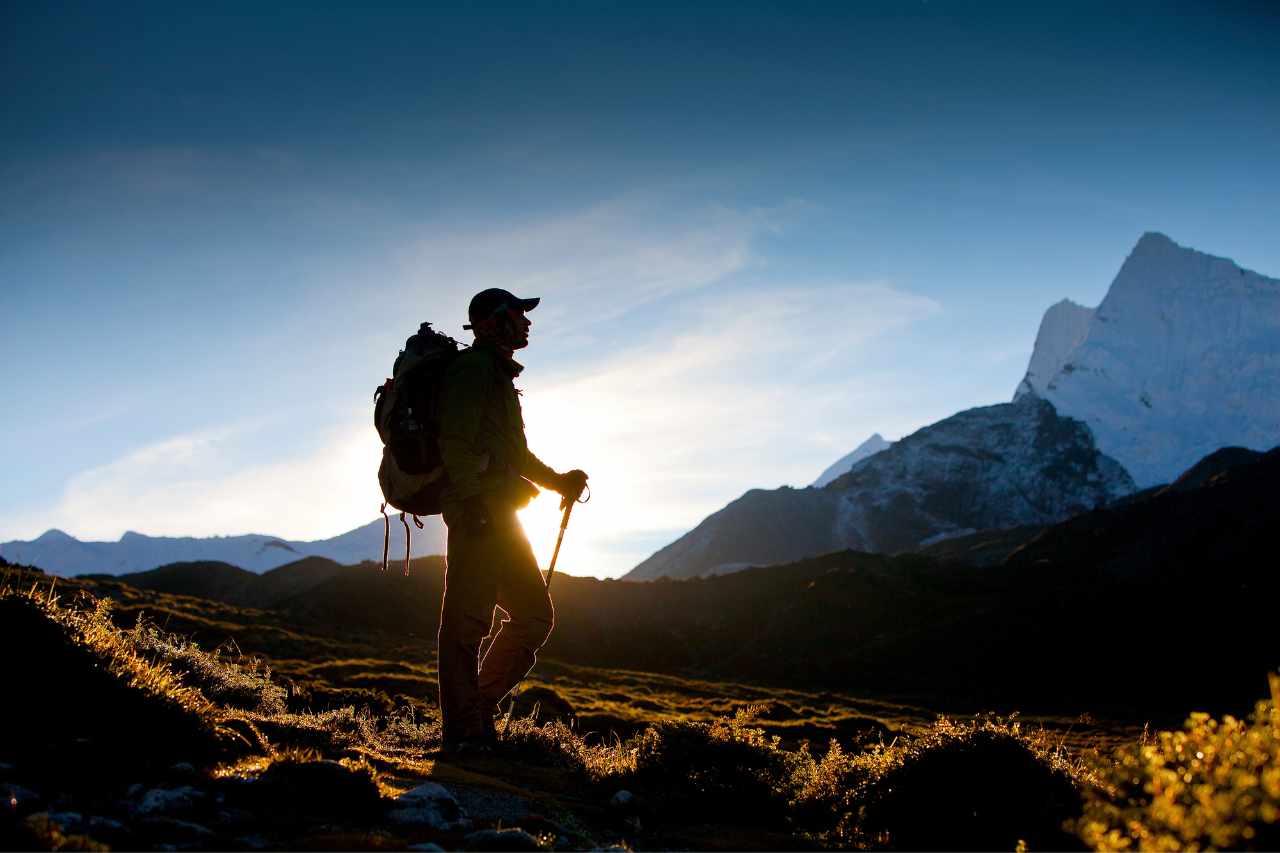
Along with being fun and engaging, hiking and trekking help in improving your physical and mental health. Some of their benefits are:
- Lowers the risk of heart disease and improves blood pressure
Both these outdoor activities can do wonders for your health. Health experts share that walking reduces the risk of having a stroke tremendously. Regular trekking or hiking results in improvement of your heart health and blood pressure, thus minimizing the chance of stroke.
- Better Overall Fitness
Hiking and trekking have been highlighted by a study published in the European Journal of Preventive Cardiology for the numerous advantages they provide to our muscles. These activities help in building up strength in your thighs, lower leg, hip muscles, and hamstrings. Your endurance is also optimized. Your bone density is built, since both are weight-bearing exercises. As you walk with a heavy backpack while trekking, it boosts your core strength as well.
- Your Mental Health Gets Better
When you escape to the outdoors, you get away from the stress of your everyday life, even if it is for some time! According to the transformative journal Nature Human Behaviour, stress, anxiety, and depression get heightened when you spend all your time around the four walls of your home only. Being in the lap of nature helps in giving you a different perspective and taking your mind off your troubles. It gives you a chance to distract your mind and focus on something better.
- Burn Calories
If you want to lose weight or tone your muscles, hitting the trail is far better than dragging yourself to a gym. Usually, hiking burns between 440 and 550 calories per hour. Now imagine what will happen during an overnight hike or a 5-day long trek! Your muscles will also get toned when the calories get burnt.
- Enhance Your Creativity
Trekking and hiking are beneficial for boosting your creativity, mental and physical health. The According to “Creativity in the Wild: Improving Creative Reasoning through Immersion in Natural Settings” authored by Ruth Ann Atchley, David L. Strayer, and Paul Atchley, spending time in nature enhances creative thinking and problem solving skills. The sunshine vitamin enhances your attention span and boosts your ability to focus. Your problem-solving skills get better when you spend more time in the wilderness. Vitamin D is also crucial for healthy bones and teeth. It boosts cardiovascular health and supports your immune system as well.
Take Your Kids Hiking: Top 5 Effective Tips

Hiking with kids may be tough at first, but it is so worth the effort! Here are some effective tips to make sure they enjoy the hikes with you:
- Opt for A Simple Hike
Hiking is challenging for kids initially. So start with choosing an easy and short hiking trail for a simple day trip with them. You can bring a stroller equipped for harsher terrain in case your toddler gets tired. These special strollers have suspension and keep your child comfortable and safe even on bumpy paths.
- Bring A Child Carrier
In case you have chosen a long expedition, you can carry your toddler on your back in a child carrier. The one having an adjustable back panel is better, because your child will start feeling heavy on a long hike. So the carrier should fit you snuggly and offer you good support. It should also have a hip belt to make you feel more comfortable.
- Bring Extra Clothes
Kids have a tendency to fall or trip. They may end up hiking in wet or muddy socks in case there is a water body on the route. That’s why it is highly recommended that you keep an extra pair of all clothing items, so that your little trailblazers don’t feel cranky.
- Tell A Story
Distraction is the key when you are hiking with your kids. Tell them their favorite story or make up a new one to divert their attention from the tiring task of walking on rocky terrains. Within no time, they will get so invested in your story that they will forget that they are hiking.
- Carry Their Favorite Treats
Bring their favorite snacks on the hike. Kids should feel excited and happy while hiking. So whenever they tell you they are exhausted, reward them with these treats. This will make them feel that the more they walk, the more treats they will get. It could be a reward for good hiking.
TWT Tip: Some of the most sought-after treks in India are:
- Valley of Flowers Trek, Uttarakhand
- Rupin Pass Trek, Garhwal, Uttarakhand
- Roopkund Trek, Uttarakhand
- Hampta Pass Trek, Himachal Pradesh
- Beas Kund Trek, Himachal Pradesh
- Chandrakhani Pass Trek, Himachal Pradesh
- Markha Valley Trek, Ladakh
- Chokramudi Trek, Munnar
- Rajmachi Trek, Maharashtra
- Sandakphu Trek, West Bengal
- Dzongri Trek, Sikkim
Enhance Your Hiking And Trekking Experiences
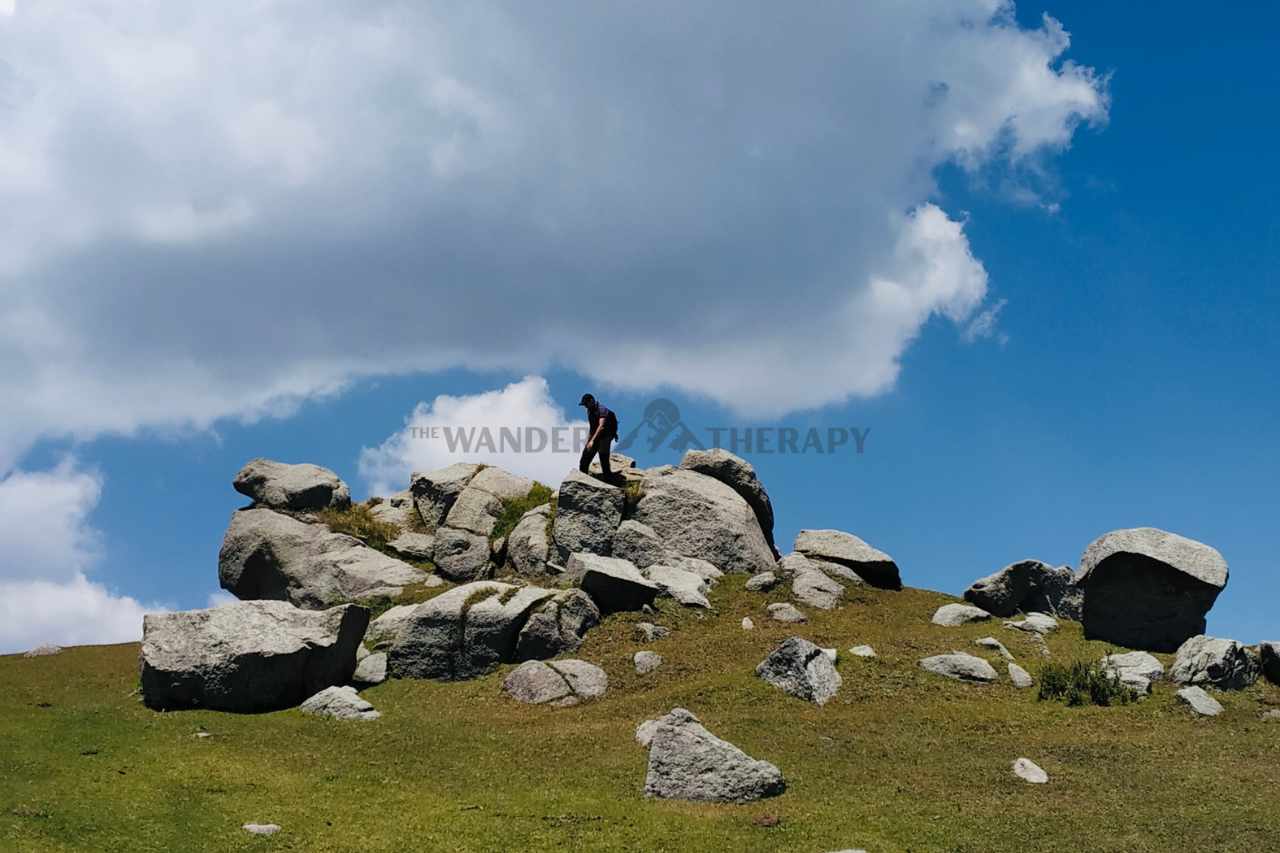
Whether you are an expert or a beginner, there are various ways in which you can enhance your hiking or trekking experience. Here are some tips:
- Maintain a good rhythm
It is crucial to keep a good rhythm and pace while hiking or trekking. Taking the same length of steps during the entire time will improve your endurance. Adjust your walk for steep terrain though. Taking shorter steps will help retain some energy, which you will need to use while ascending.
Maintain your balance to prevent injuries like twisted ankles, especially when you are trekking on rough terrains. This can be improved by training and muscle strengthening even at your home. You can take yoga classes or practice on a balance board. This will improve your posture and tone and strengthen your muscles.
- Have A Good Fitness Level
Go on practice hikes to build your endurance. Take shorter hikes a couple of times every week. This will help you adjust to new terrains easily. Moving fast and taking minimal breaks will improve your cardiovascular fitness. Follow a daily exercise routine.
Focus on cross-training for full-body strength to enhance your hiking endurance. Hiking and trekking are not just about building your leg muscles. You need to improve your core strength as well, to reduce the chances of muscle injuries, by warming up and cooling down properly with stretches.
- Invest In The Right Shoes And Clothing
It is essential to get the right pair of hiking or trekking shoes that are appropriate for the respective outdoor conditions. Getting distracted or slowed down by shoe bites or blisters while walking will not let you focus on your goal.
Keep in mind the kind of terrain you will be hiking on when you are buying new boots. Ensure that your shoes are a snug fit all over and are not pinching or tight anywhere. They should also have a wiggle room around your toes.
While trekking, you need to wear clothes that provide protection against unpredictable weather conditions. The weather often changes unexpectedly on long treks. So, carry a good waterproof, windproof, breathable, and lightweight jacket.
- Fuel Up Your Body
When you are trekking or hiking, your energy requirements increase and it becomes important to fuel your body well. Maintain your energy levels by eating small, frequent meals. Eat a well-rounded healthy breakfast and drink plenty of water if you are starting a long trek. Carry a trail mix or other such energy snacks.
- Don’t Rush
If you are a newbie, then it’s absolutely normal for you to feel a little nervous. It’s not a race! Walk at a comfortable pace and soak up the beautiful nature around you.
If you are hiking or trekking in a group, then don’t feel the pressure to keep up with the fastest walker. At the end of the day, these outdoor activities are more about enjoying the journey, rather than dragging yourself to the destination.
TWT Tip: The Great Lakes in Kashmir is known for its lovely landscape. It is a sought-after trek option if you want to enjoy a serene trek as you can camp around the lakes and experience mountain walking. You will also get the opportunity to enjoy the remoteness and solitude of the Himalayas.
Equipment Required For Hiking And Trekking
Both these activities involve getting out into the outdoors and walking amidst nature. So the equipment required is also quite similar.
You will need good boots, waterproof gear, a walking pole, a waterproof backpack, energy snacks, etc. But when it comes to trekking, you will be out on the trail for a longer period of time. That’s why you will also need a tent, survival gear, multi-use clothing, etc.
For day hikes, you will need the following:
- Light day backpack
- Water bottle
- Lunch
- Spare socks
For an overnight hike, you will also need the following:
- A change of clothes
- More food
- Tent
- Sleeping bag
- Hiking shoes or boots
For treks, you will need the following:
- 50-60L backpack
- Tent
- Sleeping bag
- Food
- Cookware
- Clothes
- Medicines
- Compass
- Sturdy boots with ankle support
TWT Tip: If you are interested in mythology as a trekker, then you should try the Pin Parvati Pass Trek. This trail has rich religious and mythological roots. It is a popular high-altitude Himalayan trek. As per folklore, Pin Parvati Pass Trek leads to the sacred meadows of Kheer Ganga – the place where Lord Shiva meditated for over three millennia.
TWT Summary
So now you are equipped with the nitty-gritty of hiking and trekking, and know that there are many differences between the two. More than people realize, there are several differences between hiking and trekking, based on parameters like the length of the activity, terrain, difficulty level, equipment required, and accommodation.
Hiking is a shorter and easier journey done on marked trails to and fro. On the other hand, trekking involves a particular destination and its path goes through different, rough terrains. It requires proper preparedness and more equipment.
So, which one is better – hiking or trekking? Which one should you select? Fortunately, there is no right or wrong answer as both of them are amazing adventure activities, and offer great physical and mental benefits. You can pick any one of them as per your area of interest, fitness level, and time in hand. Whatever you pick, remember to enjoy the journey!
Frequently Asked Questions On Hiking vs Trekking
1. What distinguishes hiking from trekking?
Hiking is a shorter and less intense activity than trekking. It includes walking on well-defined paths or trails over a short distance with a moderate elevation gain. On the other hand, trekking involves longer and more strenuous hikes on more difficult terrain and greater distances. Hiking is generally a day trip or a short overnight trip, while trekking may also include potentially more dangerous activities like climbing and canyoneering along with camping and backpacking.
2. Do the levels of difficulty vary between hiking and trekking?
Yes, the difficulty levels are different for hiking and trekking. Trekking is tougher and involves longer distances, sometimes to be covered in several days and even weeks. It may also include more challenging terrains like muddy trails or mountain passes. In contrast to that, hiking involves walking on established trails. The level of difficulty is moderate and the distance is shorter.
3. Do the gear and equipment requirements vary between hiking and trekking?
Yes, hiking and trekking require different gear and equipment. Hikers need less gear than trekkers, and trekking involves more difficult terrains and more unpredictable weather. If you are hiking, then you will typically require a day pack, snacks, and a water bottle. But when you are trekking, you will need a bigger backpack, a tent, a sleeping bag, a stove, multiple layers of clothing, trekking poles, a map or compass, etc.
4. Are there differences in the types of terrain associated with hiking and trekking?
The kind of terrain varies for hiking and trekking. Hikers walk on trails, footpaths, and other well-trodden paths. On the other hand, trekkers walk on more challenging and rugged terrains including mountains, high altitudes, and remote areas.
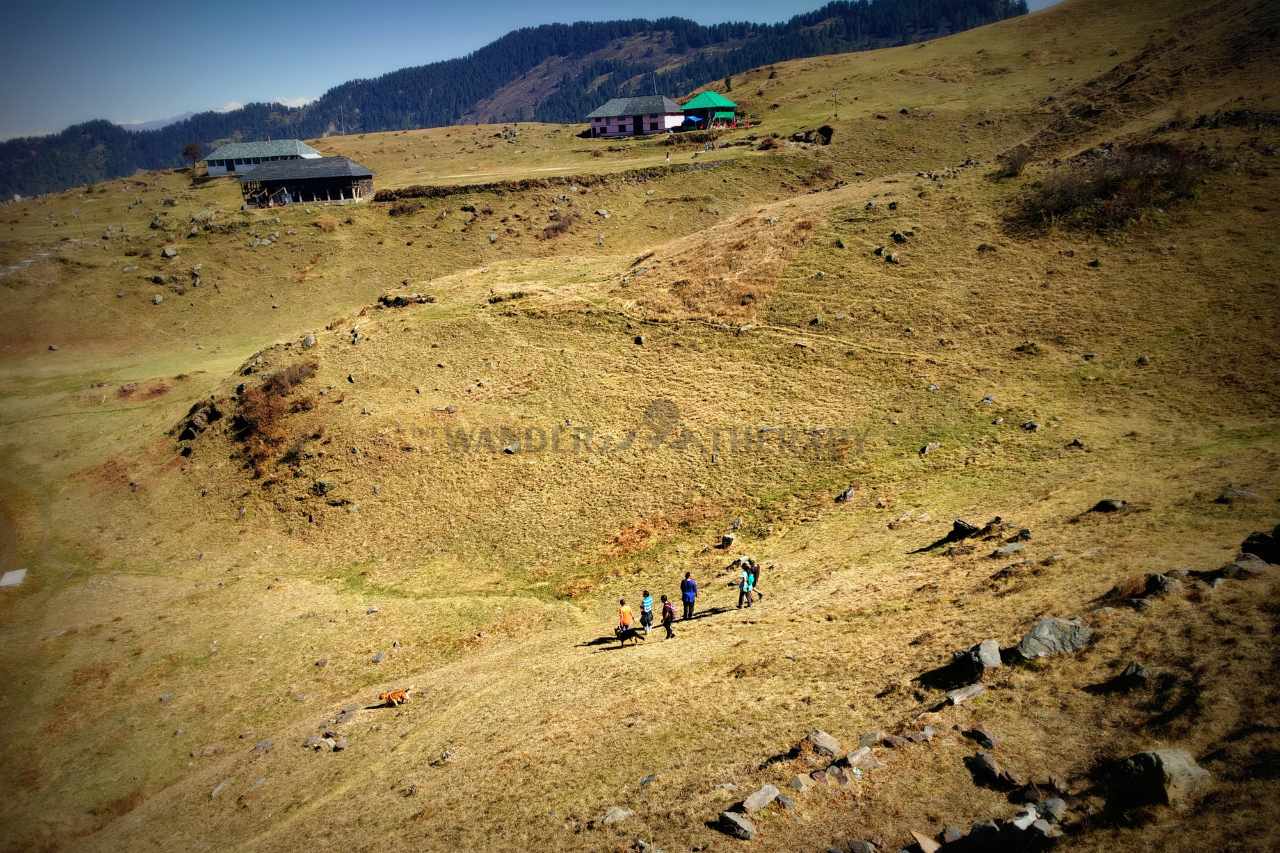
5. Are there specific time frames for hiking and trekking?
The duration for hiking and trekking varies and this is also the basic difference between these two outdoor activities. Hiking involves shorter trips, generally lasting several hours or a full day. In contrast to that, trekking involves longer trips that can extend up to several days or weeks.
6. Are “hiking” and “trekking” interchangeable terms?
No, these terms cannot be used interchangeably. A short, leisurely walk in nature is hiking, while trekking means going on a long, strenuous journey that involves camping, climbing, walking on difficult terrains, etc.
7. Are there particular skills that are required for hiking and trekking?
Different skill sets are required for hiking and trekking. Hiking is less strenuous than trekking as it is typically shorter in duration. Hikers require a basic level of fitness, an understanding of basic signs, and the ability to identify local flora and fauna. The ability to gauge the intensity of the hiking journey is also necessary.
Trekking, on the other hand, requires more advanced skills such as route planning, long-distance navigation, and an understanding of terrain and potential hazards. You should also be capable of preparing and carrying the right equipment and supplies. Assessing and managing risk is a must, along with having a great fitness level.
8. Do hiking and trekking provide different experiences, such as nature exploration and cultural experiences?
Trekking and hiking may cater to different preferences. Hikers are focused on exploring nature, thus taking in the sights, sounds, and smells of the outdoors. Trekkers are offered a more cultural experience as they traverse different terrains and visit communities along the way. Trekking lets them learn about local history, cultures, and customs.
9. Are there any safety concerns that hikers and trekkers should be aware of?
Yes, there are various safety considerations that should be kept in mind while engaging in hiking or trekking. Hikers should wear appropriate clothing and footwear, be aware of their surroundings, carry a first aid kit, food, and water, and stay on trails. Trekkers should be mentally and physically prepared for longer and more arduous hikes, carry a compass or map, and bring necessary supplies with them, including food, tents, etc. They should also be prepared for potential hazards like altitude sickness, hypothermia, and avalanches.
10. Are there any recommended fitness levels for hikers and trekkers?
Yes, there are certain fitness levels for hiking and trekking. For hiking, you should be able to walk up to nearly 9 km on relatively flat terrain at a steady pace. A higher fitness level is required for trekking. You should be able to walk around 15 km a day while carrying your backpack that weighs at least 8 kg. In addition to that, trekkers should be capable of walking on tougher terrains and have experience with outdoor activities like camping, etc.
Frequent Traveler? Here’S Some More Travel Goodness From Us:

